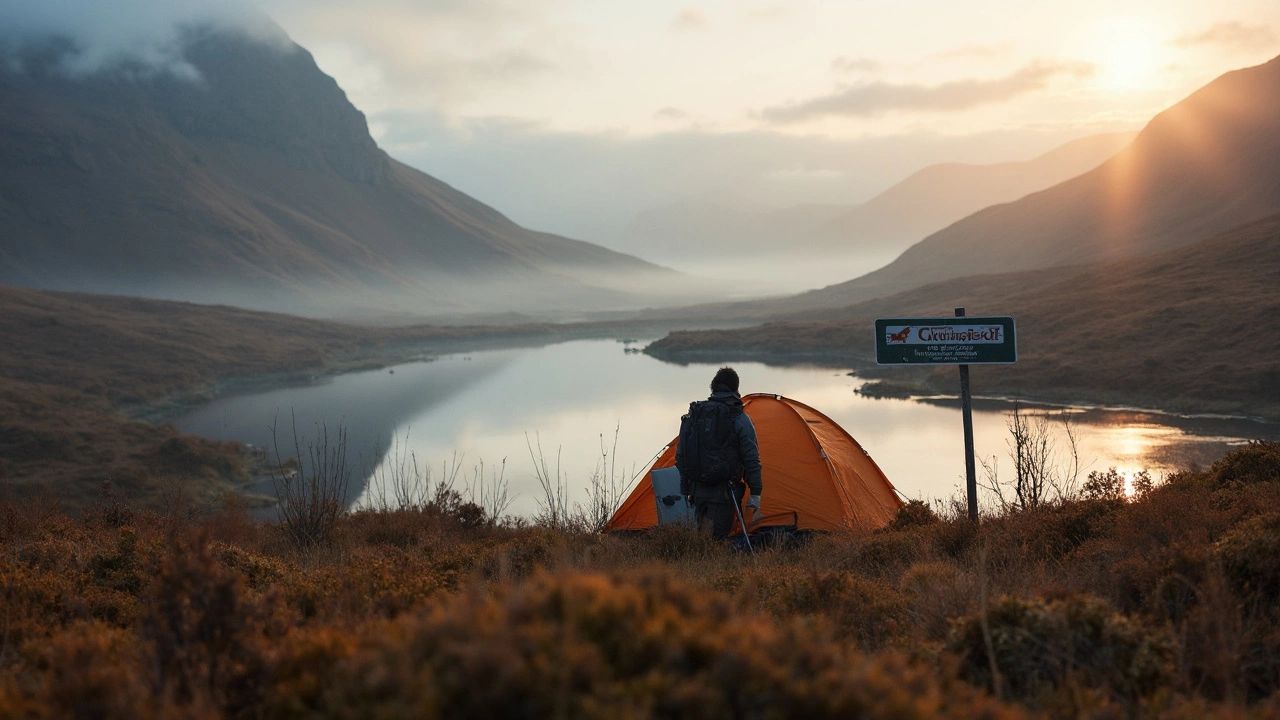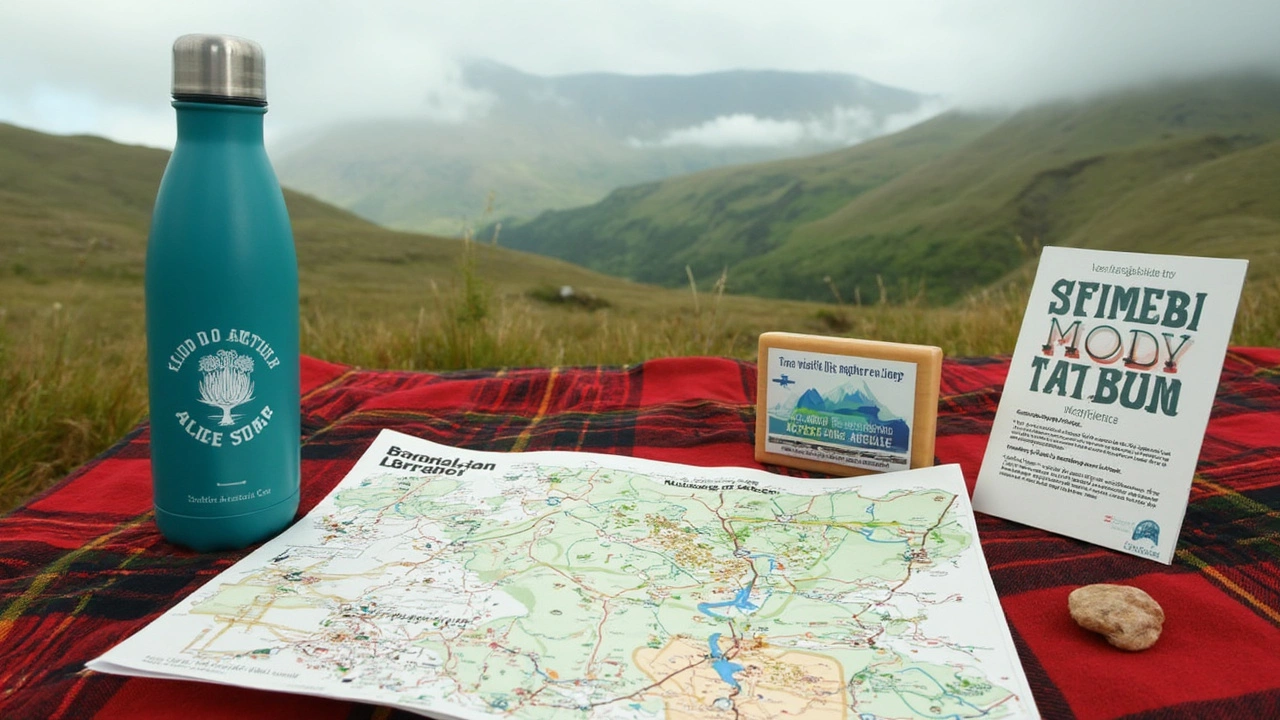Wild Camping in Scotland: What You Can (and Can't) Do
 May, 29 2025
May, 29 2025
Wild camping in Scotland is totally legal—yeah, you read that right. Thanks to the Land Reform (Scotland) Act 2003, you can pitch a tent pretty much anywhere on unenclosed land, as long as you follow a few basic rules. This makes Scotland different from the rest of the UK, where wild camping is usually banned unless the landowner says otherwise.
But before you start packing your sleeping bag, know that it isn’t a free-for-all. The freedom comes with a bit of responsibility: leave no trace, don’t mess with wildlife, and respect others who share the space—locals and fellow campers included. Stick with small tents, avoid big groups, and skip lighting campfires if it’s too dry or you might leave a scar on the land.
Some areas—especially the hot spots around Loch Lomond—have extra byelaws during busy months. The local rangers are friendly but not shy about asking campers to move on if you break the rules. Good news: there are still a ton of amazing places left where you can have the full wild camping experience without stress.
- Is Wild Camping Legal in Scotland?
- Where You Can (and Can't) Set Up Camp
- Wild Camping Etiquette—What Matters Most
- Staying Safe and Prepped Out There
Is Wild Camping Legal in Scotland?
If you’re wondering about the laws, it’s refreshingly simple: wild camping is legal all across Scotland, thanks to the Land Reform (Scotland) Act 2003. This isn’t some loophole or grey area—it’s built into Scottish law. Anyone can enjoy what’s called "responsible access" to most land and inland water. This is way more relaxed than rules in England or Wales, where you usually have to get special permission.
What does "responsible access" mean? Basically, you have to respect the countryside—take your rubbish with you, don’t damage anything, and keep out of people’s gardens or farm fields with crops or animals. The Scottish Outdoor Access Code lays out the dos and don’ts, but it’s all pretty straightforward. If you act like a decent human, you’re good.
Check out this quick comparison to see how Scotland’s wild camping freedoms stack up against the rest of the UK:
| Area | Is Wild Camping Legal? | Main Law/Rule |
|---|---|---|
| wild camping Scotland | Yes | Land Reform (Scotland) Act 2003 |
| England & Wales | No (except some areas, like Dartmoor) | Private land—owner’s permission needed |
| Northern Ireland | No | Private land—very strict |
The only real catch in Scotland is that some places—like parts of Loch Lomond & The Trossachs National Park—use byelaws to limit camping at certain times. These rules are there because way too many people were trashing sensitive areas. If you’re heading up that way, check if you need a camping permit (it’s easy and cheap, but you don’t want a fine).
- You’re allowed to camp on unenclosed land for a short period (usually a night or two) if you’re responsible.
- Don’t set up shop in someone’s garden, golf course, or fields with crops or livestock—common sense, really.
- Stick with small tents and avoid big groups; bigger setups look more like an invasion than wild camping.
So in short: if you respect the land and follow the basic code, wild camping in Scotland is not just allowed—it’s part of what makes exploring up here special.
Where You Can (and Can't) Set Up Camp
Here’s the real deal: in Scotland, most unenclosed land is fair game for wild camping, thanks to the right-to-roam policy. That means you can usually pop your tent in the hills, woodlands, moorland, or by many of the lochs—just don’t get too close to someone’s house or farmland with crops or livestock.
The key legal bit comes from the wild camping Scotland law—if the land is unenclosed (not fenced off, not someone’s private garden, and not obviously off-limits), you’re good. If you can see sheep or cows, you might want to check for signs since farmers need to protect their animals. Forestry Commission and National Trust lands often allow camping, but check for any local notices or seasonal restrictions.
- Where you CAN camp: Most open countryside, remote beaches, forests, hills, and mountain sides.
- Where you CAN'T camp: School playing fields, sports pitches, golf courses, farmyards, military land, or near buildings. Urban parks are a no-go. Some lochs have extra restrictions (looking at you, Loch Lomond and The Trossachs National Park).
Take a look—these are some of the busiest ‘restricted’ wild camping spots (especially from March to September):
| Area | Restriction | When it Applies |
|---|---|---|
| Loch Lomond & Trossachs National Park | Byelaws (must use permit zones/campsites) | March-September |
| East Loch Lomond | No wild camping at all | Year-round |
| Glen Etive | Traffic controls/seasonal restrictions | Busy weekends/summer |
Tip: If you’re near a main road, don’t just set up in a layby or car park. Roadside camping isn’t considered wild camping and can get you moved along fast. For anyone hiking long trails or cycling across Scotland, make sure you get a few hundred meters away from roads or buildings—for privacy and to keep out of trouble.
Not sure if you’re allowed to camp somewhere? If it feels dodgy (too busy, too close to houses, clearly farmed), just move on. In Scotland you’ve got options, so it’s easy to find somewhere perfect without stepping on any toes.

Wild Camping Etiquette—What Matters Most
If you don't want wild camping in Scotland to get shut down for everyone, you've got to follow some basic rules. These aren’t just guidelines—they’re the way locals decide if campers are welcome or just a pain. The wild camping Scotland spirit is about access, not making a mess or leaving problems for someone else.
First off, leave no trace. This isn’t just a buzzword—Scotland’s Outdoor Access Code makes it clear you need to carry out everything you brought with you. That’s rubbish, leftover food, even orange peel or eggshells (they don’t break down as fast as you’d think). People notice little stuff left behind, and even one lazy camper can wreck a spot for everyone.
- Stick to small groups (ideally under 3 tents, max 2 nights).
- Pitch late, leave early. Don’t treat a beauty spot like a mini holiday park.
- No campfires on peat or dry grass. Use a camp stove if you must cook.
- Stay away from farms, houses, or fields with animals—always ask if unsure.
- Don’t use soap or shampoo right in rivers or lochs. Even the eco-friendly stuff causes harm.
- Bury toilet waste at least 30m from water (and take used toilet paper away in a bag).
Here’s a look at some key facts about what Scots say makes the biggest difference:
| Do’s | Don'ts |
|---|---|
| Pack out litter—even fruit peels | Leave rubbish or burn plastics |
| Use a trowel for toilet waste | Bury wipes or sanitary products |
| Set up late, leave early | Stay in one spot all week |
| Campsite out of sight of roads/houses | Sleep by roadsides or parking areas |
You might see more "NO CAMPING" signs around busy lochs or nature reserves—these are there for a reason. Rangers get real complaints about broken glass, scorched grass, and overloaded bins, especially in summer. It’s not hard to be one of the good ones: blend in, don’t overstay, and if you see mess from others, help clean it up. Locals notice and remember the difference.
Staying Safe and Prepped Out There
Scotland’s weather changes fast. One minute it’s blue skies, then you’re wrestling your tent in rain that feels horizontal. Bring a waterproof jacket, decent boots, and layers—even in July, the Highlands can feel chilly at night. Midges are tiny monsters in summer, so pack a head net and strong repellent or you’ll get eaten alive.
Navigation can trip up even seasoned campers. Mobile signal gets patchy once you’re far from towns, so don’t just rely on Google Maps. Download offline maps or take a paper Ordnance Survey map and a real compass—no batteries needed. If you get lost, stay put if you can and let someone know your plans before you leave.
- Boil your water if sourcing from streams. Even the cleanest-looking burns can carry bugs.
- Stick to well-used pitches if you can spot them—this avoids damaging new patches of ground.
- Pick higher ground if heavy rain is coming, so you don’t wake up in a puddle.
- Bag your rubbish and take it with you. No one wants to camp next to someone else’s leftovers.
Emergency services can take longer to reach remote spots. If there’s an accident or you need help, dialing 999 and asking for mountain rescue works even with patchy signal—sometimes a text will go through when a call won’t.
| Average July Rainfall | Daylight Hours in June | Midge Peak Season |
|---|---|---|
| 113 mm | 17-18 hours | June–August |
A final tip—if you’re new to wild camping Scotland, don’t go alone on your first trip. There’s safety (and more bad jokes) in numbers.